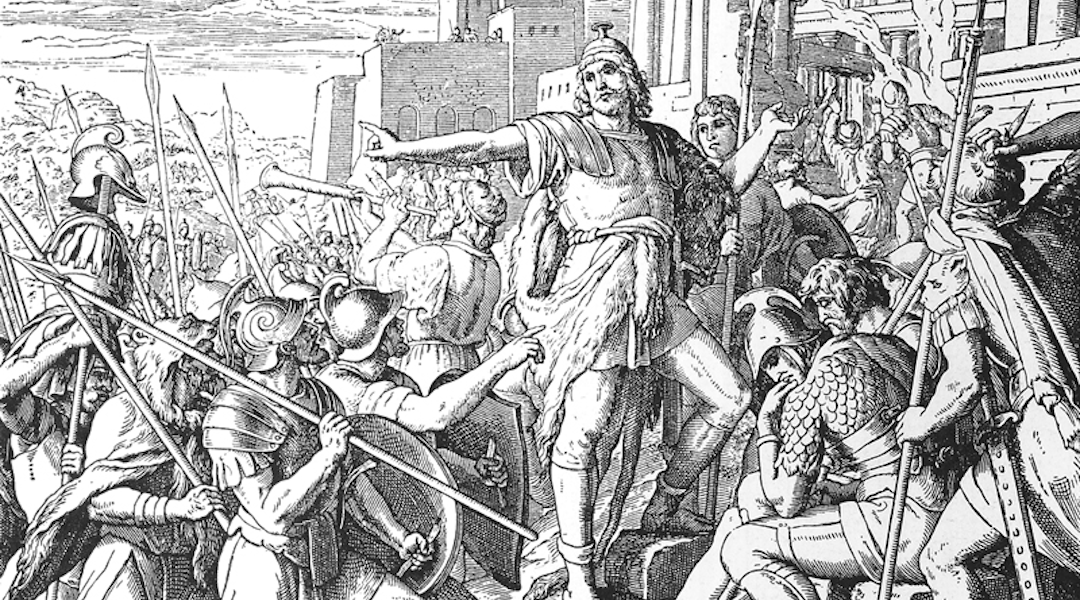(JTA) — Last summer, I became a chaplain at Brown University, a campus at which a celebration of the uniqueness of every student is embedded in our culture, where we pride ourselves on bringing students together in creative and unexpected ways.
That means this is my first Hanukkah on campus. And what a time: Two months after the darkest day in contemporary Jewish history, some Jewish students are feeling singled out for publicly supporting Israel’s military action in Gaza. Some are feeling unwelcome in institutional Jewish spaces because they do not identify with the word “Zionist.” Some Jewish and Arab students have shared that they have felt as if they were tiptoeing, seeking to find peers with whom they could mourn for all people in Israel-Palestine who have been assaulted or murdered and express horror at the trauma that is ongoing.
Many students have described strains in relationships with people with whom they disagree. Some students have shared their discomfort walking on campus in clothing that is associated with Palestinian or Jewish culture, and some students have expressed concern or disappointment about how staff, faculty, administrators and other stakeholders have used their power, platforms or resources.
Now, as we light the first candle, students with family or friends serving in the IDF may feel connected to the military themes of the holiday like never before. And other students may struggle to find light, as they show up hand in hand with their Israeli and Palestinian families and friends trying to find light of their own.
When I reflect on productive discomfort, a concept I learned from Ruth Messinger, one of this generation’s great Jewish lights, I notice that I, like many of us, often find myself in a conversation in which the discomfort no longer feels so productive. It is tempting to put up a boundary or just walk away. What I have been sharing with my students is that when I feel myself hitting a wall or wanting to walk away, I try to push myself to ask one more question, and then to do my best to listen to their answer with an open heart.
How I teach Hanukkah to a 3-year-old — perhaps toppling a dozen blocks that I have built to represent the Second Temple — is different from how I teach it to adults, perhaps analyzing the context of Jewish farmers living in the land of Israel grappling with the Greek empire’s focus on the polis.
There have been multiple layers of the Hanukkah story. The Talmud acknowledges Hanukkah’s military victory but uses the Hebrew word nes, miracle, to describe the small amount of oil lasting seven days longer than expected — transforming a national holiday marking a military victory into a Jewish holiday celebrating the triumph of faith. Prayers in the synagogue service and the blessing after meals expand the language of miracles into redemption and heroism, salvation, military might and comfort — a lofty list, all of which hold contemporary resonance.
Some 800 years ago, Maimonides taught that if we have not lit Hanukkah candles of our own yet see someone else’s Hanukkah candles, we still say the blessing “she’asah nissim,” giving thanks for the miracles wrought for our ancestors in days of old at this time. We are not only invited to publicize the miracle in each generation by making our hanukkiyot visible from the street, but perhaps saying a blessing when we see someone else’s candles helps shape the holiday for each person, in each generation. In the United States, a seemingly minor holiday took on new meaning in the gift-giving season of Christmas; in Israel, the ancient military narrative of the few against the many was familiar once again in 1948.
The more I learn about the historical Hanukkah of 2,200 years ago, the less I imagine it as a struggle between “us” and “them,” between “Brave Judah the Maccabee” and “Bad King Antiochus.” The “outsiders” in this story were mostly other Jews against whom the Maccabees were fighting in a civil war. Although our prayers associate the Maccabees with a victorious Hasmonean dynasty, the leadership they established would be associated with power consolidation and corruption within just a few generations; Rabbi Daniel Levine has noted that, with hindsight, rabbinic tradition minimizes the role of the Maccabees. So, what does “winning” really mean in the long term when binaries begin to break down, when “us vs. them” is not a sufficient description?
Unlike its parallel holiday of Purim a few months later, there is no requirement to tell the story of Hanukkah word by word the way that the public reading of the Megillah, the Scroll of Esther is part of many people’s Purim practices. No hearing the shofar. No telling the story of the Exodus.
But even though there is no “requirement” to tell the Hanukkah story, I hope we remember that flames are symbols of the human soul, and that as we increase the light each night, we find opportunities not only to tell our Hanukkah stories but to hear the stories of other people as well. We might start by reconnecting with someone with whom we have lost touch, but we should also make an effort to hear the story of someone with whom we might disagree so strongly that it feels easier simply not to listen to their story at all. Easier is not always better, nor does it necessarily bring an enduring solution.
This week our students will gather around campus with their friends, light the menorah, eat foods fried in oil and tell Hanukkah stories on their own terms, stories that some may have learned in preschool and some they are starting to encounter for the first time as Jewish young adults.
My wishes for all of us this Hanukkah 5784 are opportunities to connect with others in ways that are creative and challenging, in ways that surprise us, and in ways that center our ongoing senses of curiosity and wonder in this season of light — may it increase beyond these eight nights.
JTA has documented Jewish history in real-time for over a century. Keep our journalism strong by joining us in supporting independent, award-winning reporting.







